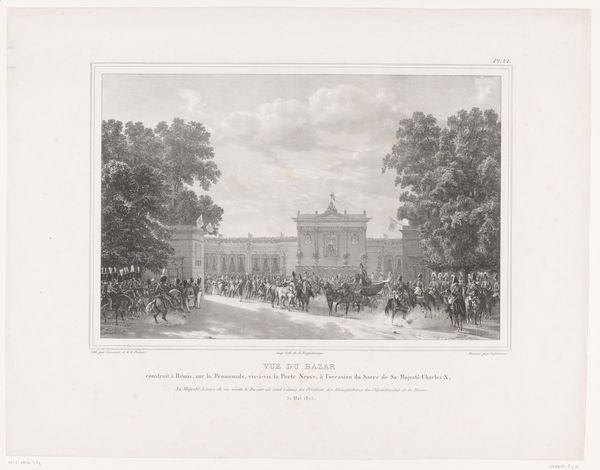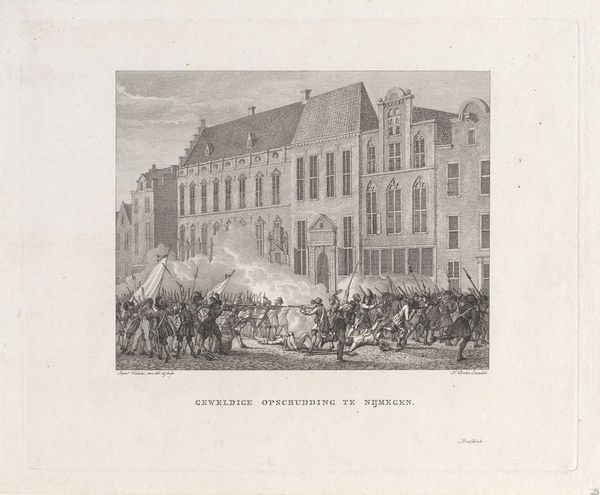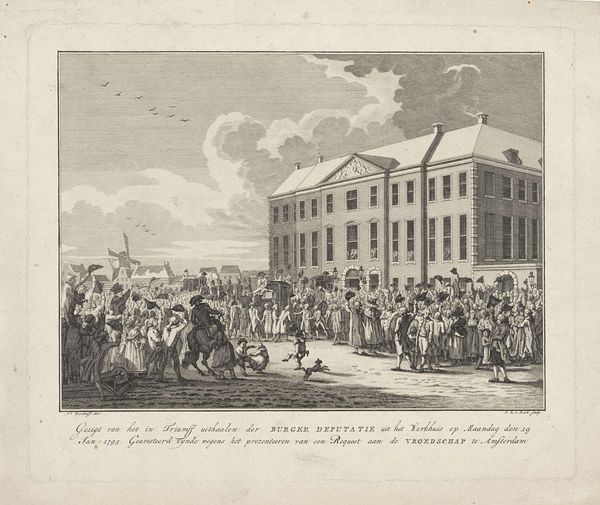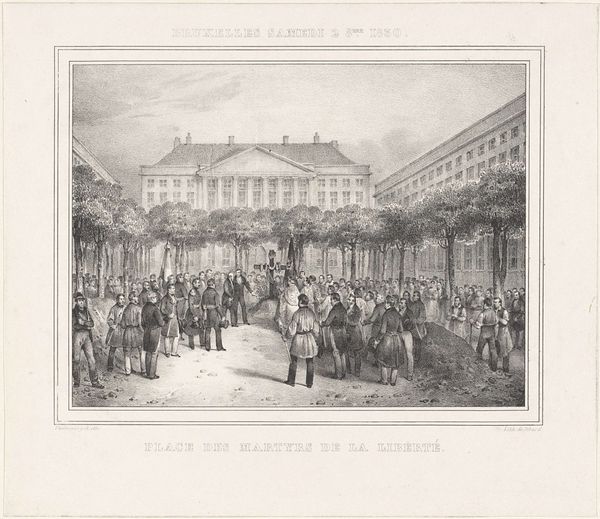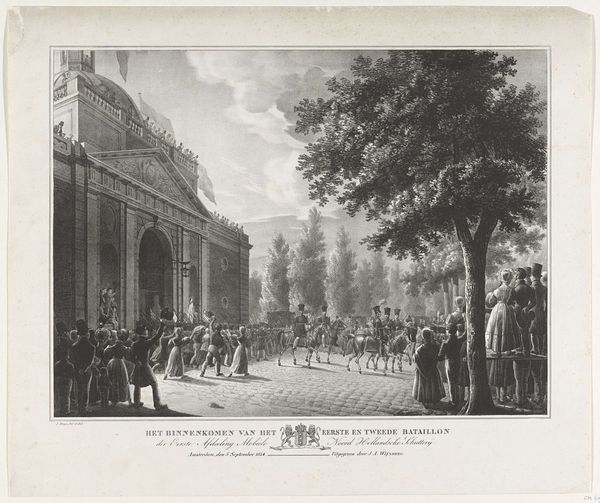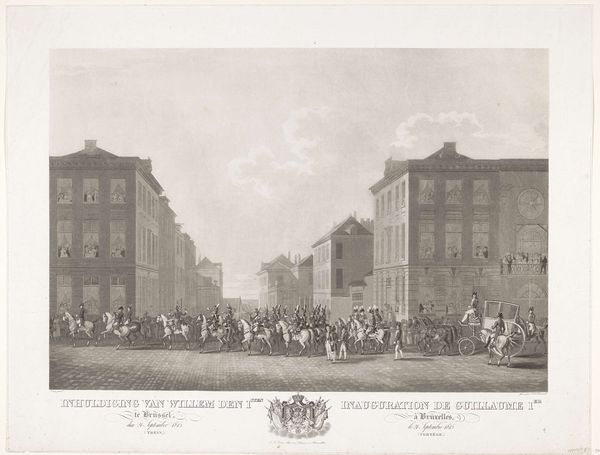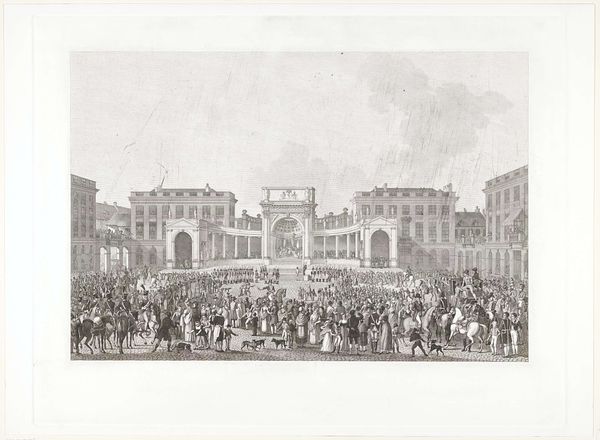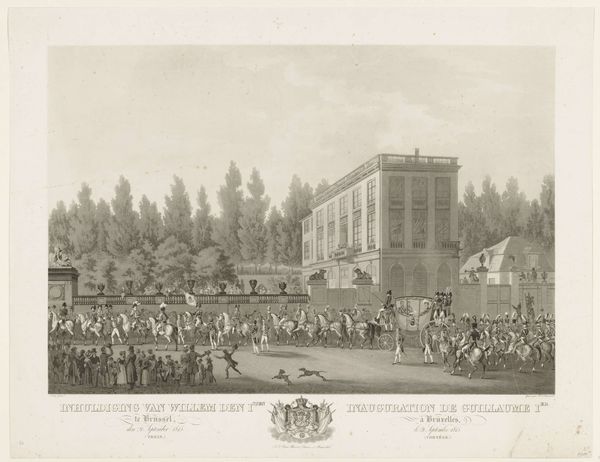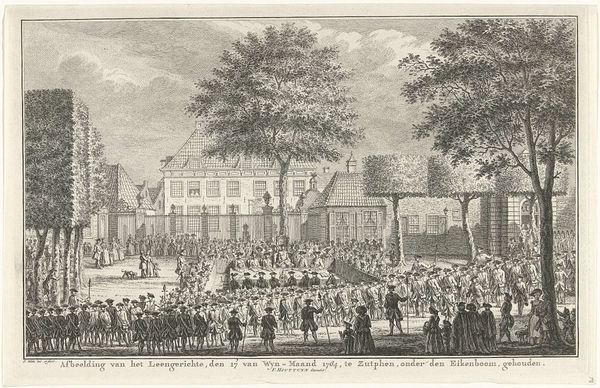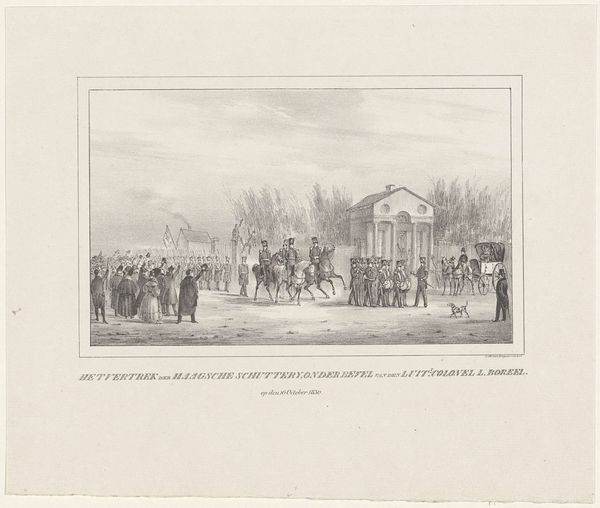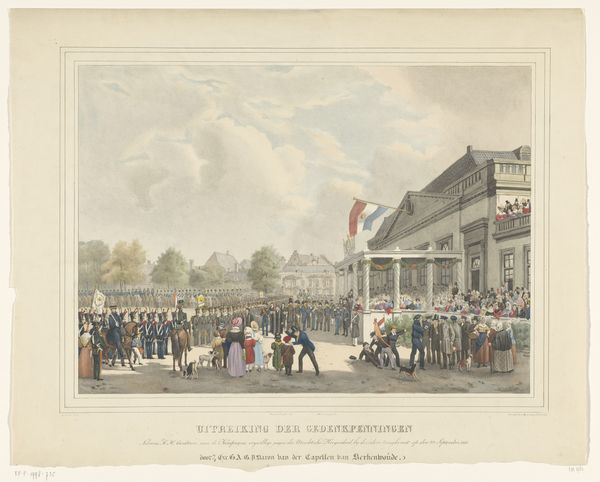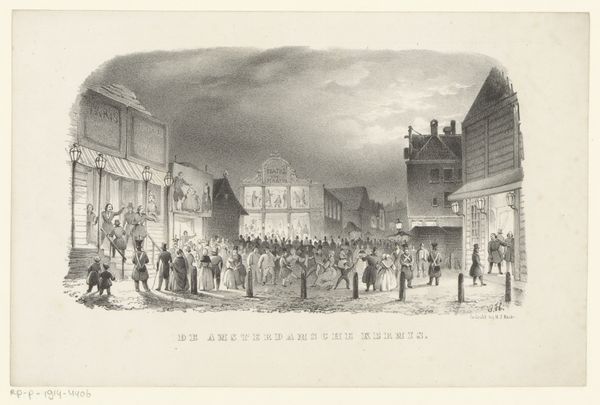
Uitreiking der gedenkpenningen aan vrijwillige jagers van de Utrechtse Hogeschool, 22 September 1831 1831
0:00
0:00
print, engraving
# print
#
cityscape
#
genre-painting
#
history-painting
#
engraving
#
realism
Dimensions: height 465 mm, width 555 mm
Copyright: Rijks Museum: Open Domain
Curator: This engraving by Theodoor Soeterik, dating from 1831, captures "The presentation of commemorative medals to volunteer riflemen of the Utrecht University, September 22, 1831." What's your initial reaction? Editor: I'm immediately struck by the image’s vastness and how skillfully the artist communicates a scene teeming with figures. The architectural elements feel solid, classical. It is finely detailed, even delicate. Curator: Indeed. This print commemorates a very specific historical moment, steeped in the socio-political context of the Netherlands at the time. The volunteer riflemen of the University represent the defense of the nation during a period of unrest. Editor: The lines lead your eye in a sophisticated way, pulling you from the gathering of common folk towards the more official figures on the podium. Light and shadow are handled so effectively; the building seems almost to breathe! Curator: That podium isn’t just any structure; it's likely the St. George’s Lodge in Berkenroede. This piece becomes significant in revealing the role of civic buildings and the staging of patriotic events within the 19th-century Dutch Republic. Editor: Tell me more. Does the image communicate aspects of Dutch Nationalism at the time? Is that even a question worth pursuing, based on the content you presented? Curator: Precisely! These ceremonies acted as vital methods for building civic identity and solidifying support for the crown, even among intellectual and civilian populations. This work reveals both the formal pomp of public reward and a specific chapter in university and national military history. Editor: Thanks, knowing a little about the social function behind the scene makes the overall design stand out to me even more. It’s really quite amazing how every face feels unique and has individual definition. Curator: Considering it in context helps explain the attention to detail, and the precision in the representation of people. This wasn't just art for art's sake; it had a very public purpose. Editor: Looking closer, it appears Soeterik captured a key intersection between art, statecraft, and community that deserves closer attention. Thank you! Curator: My pleasure. It reveals an intriguing facet of 19th-century Dutch social life and memorialization that might not be initially obvious.
Comments
No comments
Be the first to comment and join the conversation on the ultimate creative platform.
